I became interested in Infrared (IR) photography several years ago and purchased a converted point-and-shoot camera from eBay, finding I really enjoyed the images. The one disadvantage was the image quality of the little camera – despite being a 12mp camera, the minute sensor did not allow for much enlargement, but I hung a few photographs on my wall in appropriate sizes anyway.
I had in the back of my mind to someday have a DSLR converted for IR, particularly since I had a Nikon D300 which I had bought in pristine condition with a low shutter count for peanuts. Fast-forward to the present when I finally sent off the camera to LifePixel to be converted. (As an aside, mirrorless cameras have several advantages for IR shooting which make them quite appealing, but I didn’t want to buy a mirrorless camera just for IR, and DSLRs can work just fine.)
There are several different types of filters which can be applied to the camera after removing the “Hot Mirror” filter which blocks most all infrared light. I chose the 590nm filter which lets in a good amount of available light, as well as IR light. The reason for this was to be able to shoot both traditional IR black-and-white type images, as well as what are often referred to as “false color” IR images, both of which I have presented below.
The images are local to my area, mainly testing the waters, so to speak, and while I am pleased with the results so far, I have a long way to go in learning this new mode of photography. I will give brief descriptions of the processes used to make each image, but this is by no means intended as a tutorial.
There are many examples of IR photography and descriptions of the process online, but a word of caution is in order. I have found that some information is either outdated, refers to software features which have changed, or were written before newer features were added to the software products mentioned in the articles or videos.
Currently I am using a mixture of Adobe Photoshop, Adobe Lightroom, ON1 Photo Raw 2024, and occasionally Affinity version 2. The reason for using different programs really just comes down to their individual features as it relates to the type of images on which I am working.
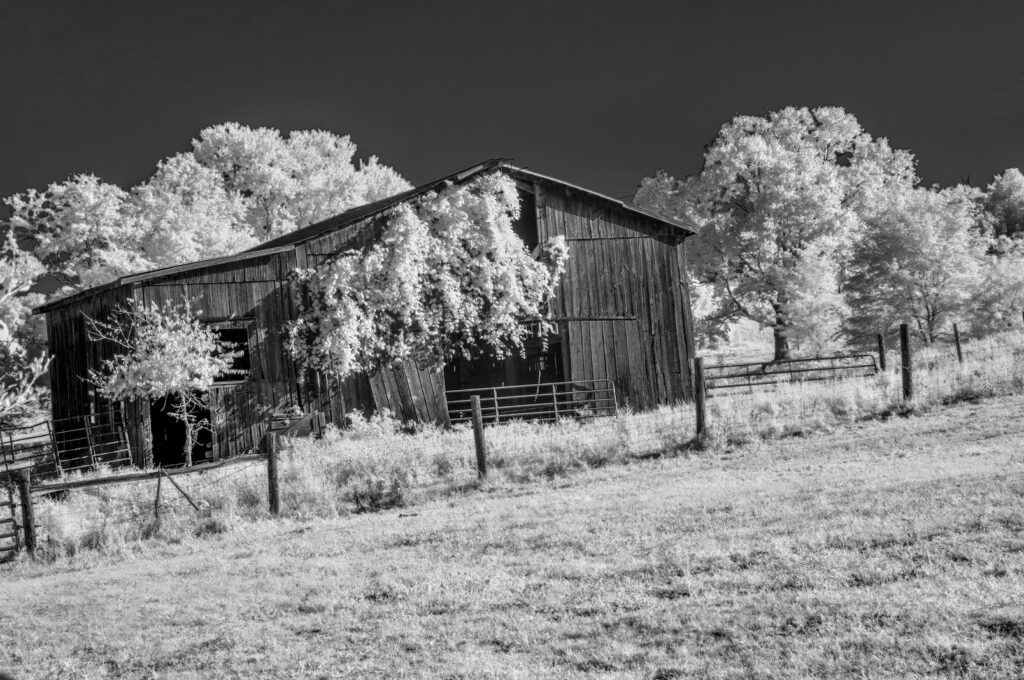
This is what I would call a traditional infrared photograph converted into grayscale tones. This is similar to what could be expected using black-and-white film and an IR filter on the front of the lens.
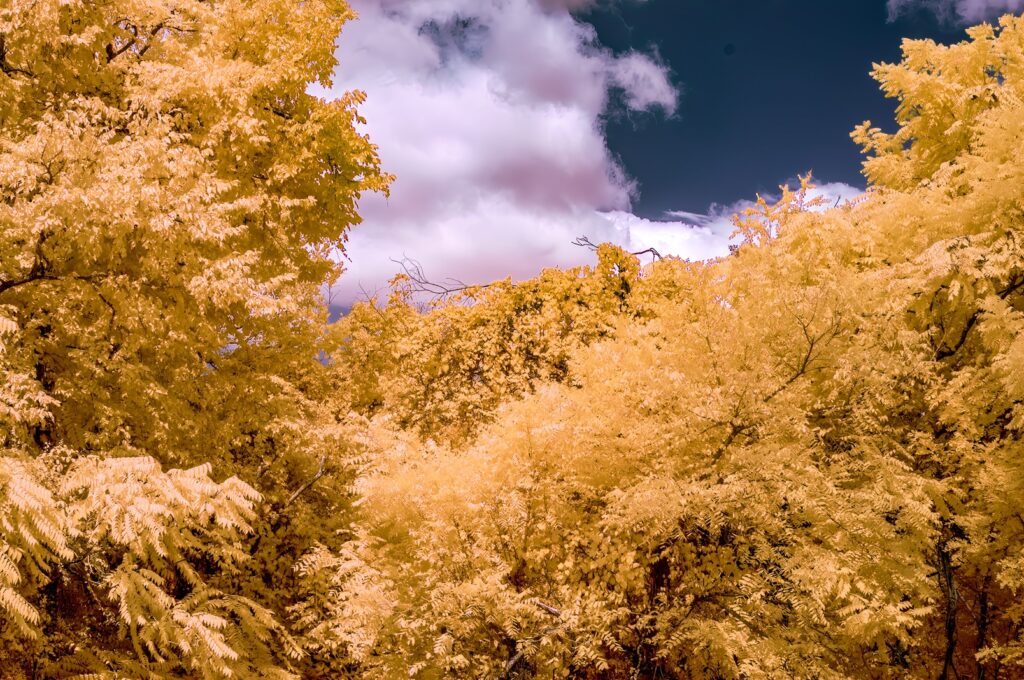
This is one of my first attempts using the channel mixer method in Photoshop, described in many tutorials, where the red and blue channels are swapped. (One additional note: try applying “Auto Tone” after swapping the red and blue channels – I find it helps some photos.)
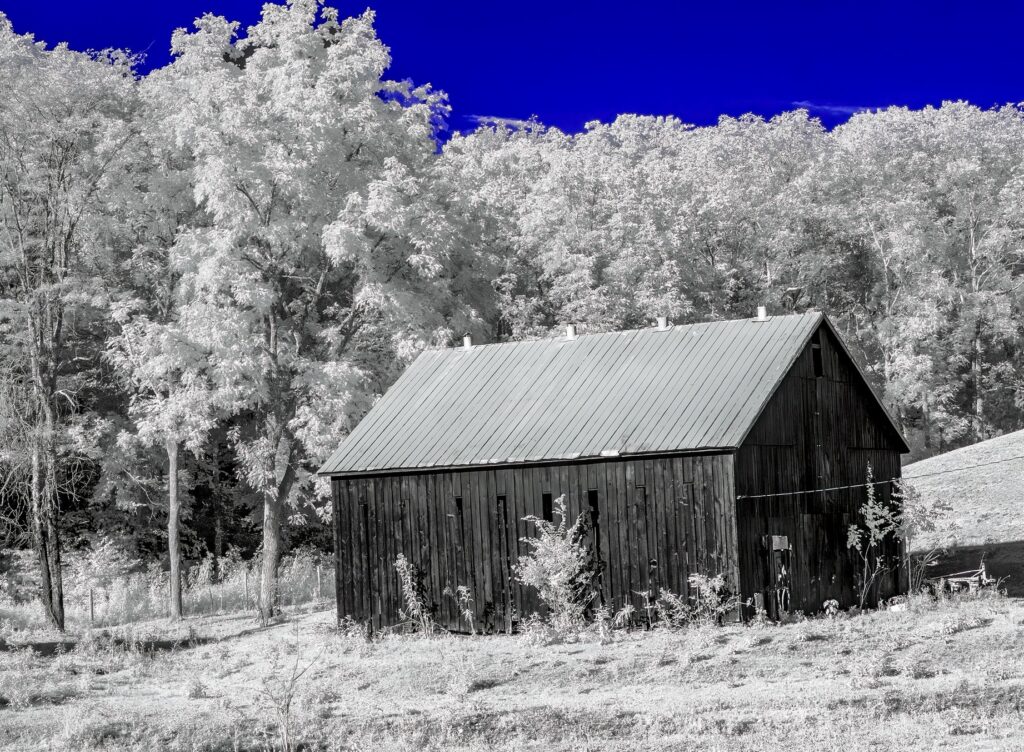
This type of image is often called a colorized or false color image for obvious reasons. One of the challenges out of camera is trying to get as close to the IR color temperature as you can, with most cameras ranging from 2000-2500K as the lowest. Adobe Camera Raw, ON1, and Affinity can go down to 2000K, while the lowest custom white balance available in the D300 settings is 2500K.
This image was made using something of a hybrid approach. I selected the sky, inverted the mask, and “color” adjusted to a black and white IR effect. I then enhanced the sky a bit to a darker blue for a more dramatic sky than produced by the channel-swapped blue.
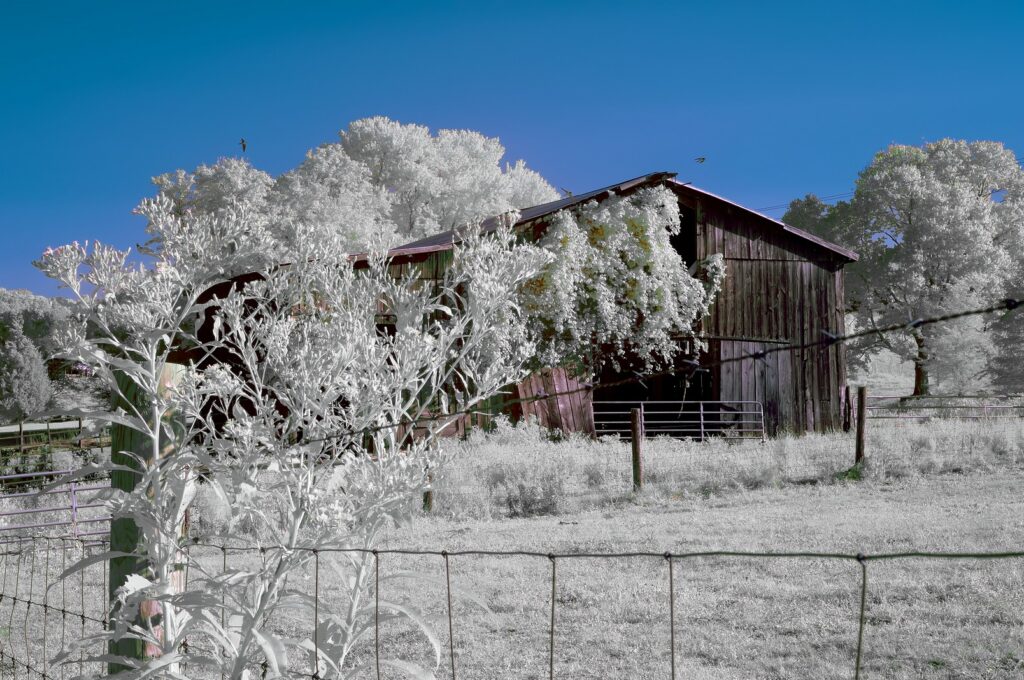
This is another false color image with more time spent working on various parts of the scene. One advantage to the 590nm filter is the increased latitude to “play” with an image, but that is also the drawback to the filter – it requires more effort to get the look you want, and when in the beginning stages as I am, well, let’s just say folks who are skilled at this would have finished much more quickly and with better quality! But, part of the joy is in the journey, right?!
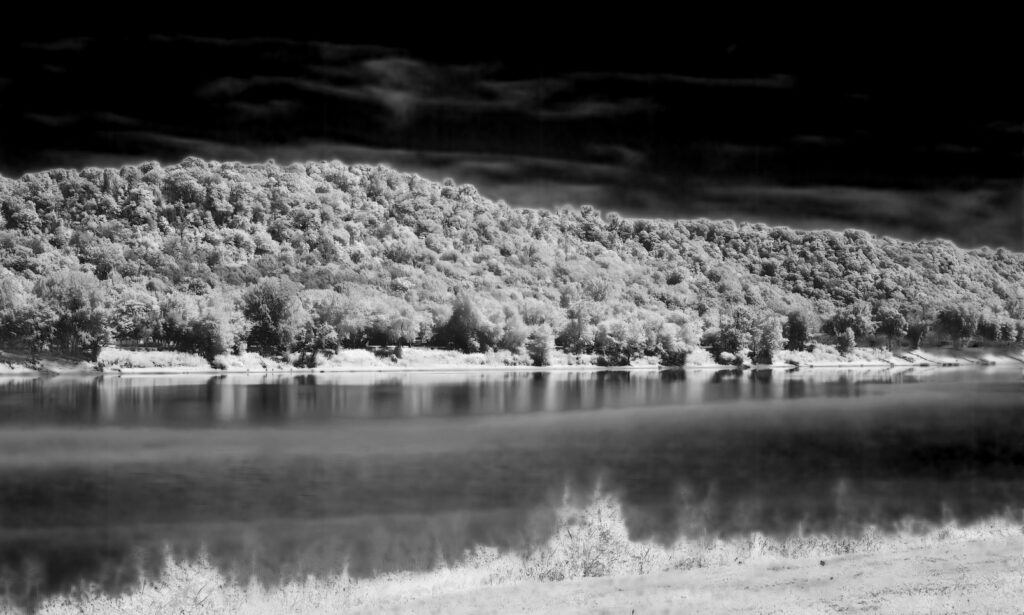
This last image is back to a more traditional IR image, but with the sky darkened a bit more than the normal “dark sky” effect inherent in IR images. As you may already know, the direction of the sun has a great impact on how much infrared light is cast on a scene, and here the IR light was at more of an angle, making the effect less dramatic. But I like the shot, and it is much more interesting than the flat light of noon on this particular day.
I hope you get a chance to play around with infrared images, whether with lens filters and traditional black and white film, or with a converted camera as I have done. I suspect, at least for a while, I will be carrying this camera around with me, along with my standard cameras, due to the “fun factor” and to learn more of its possibilities. Like many of you, I have learned to “see” in black-and-white, so now I want to learn to “see” in infrared!
Share this post:
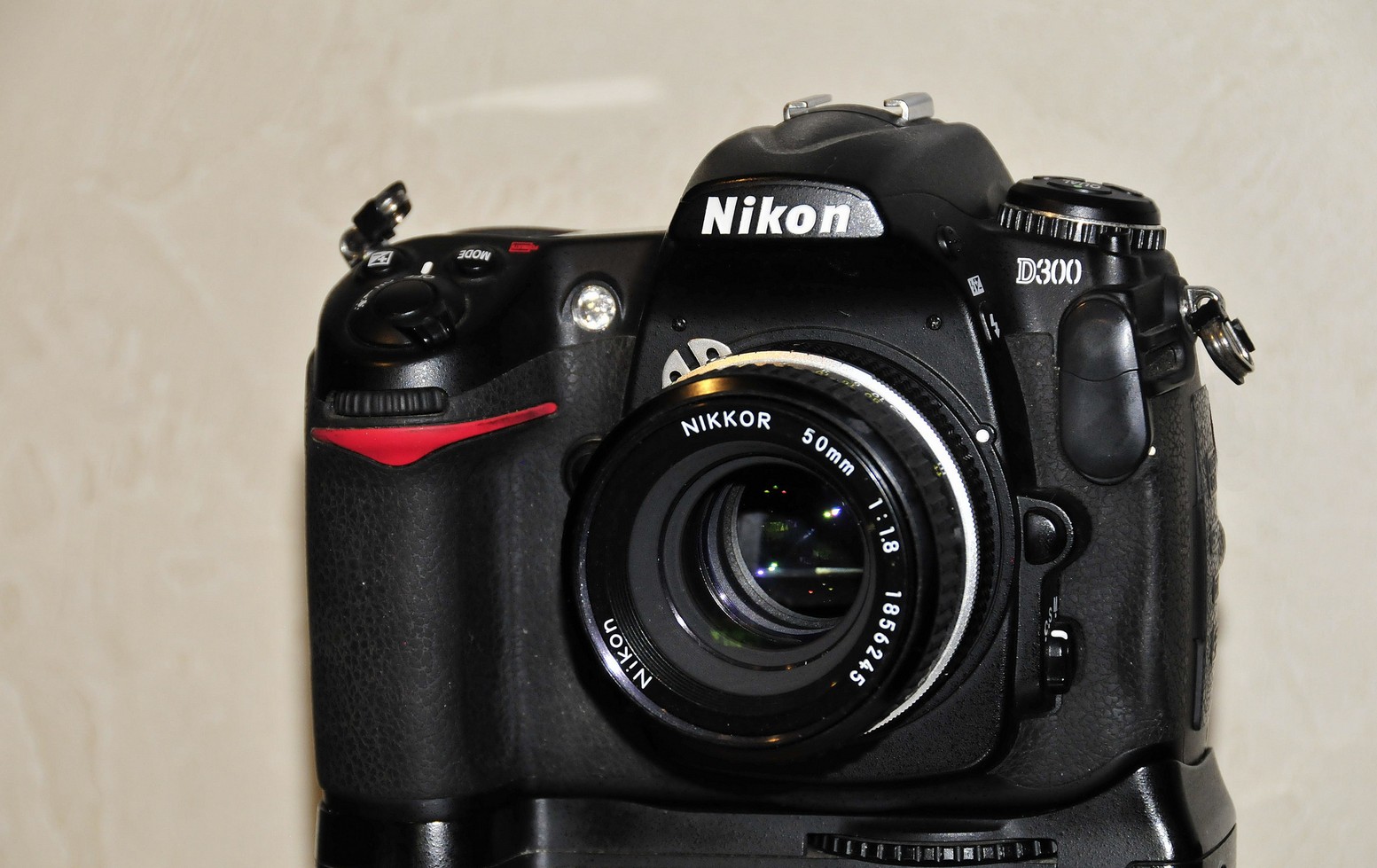
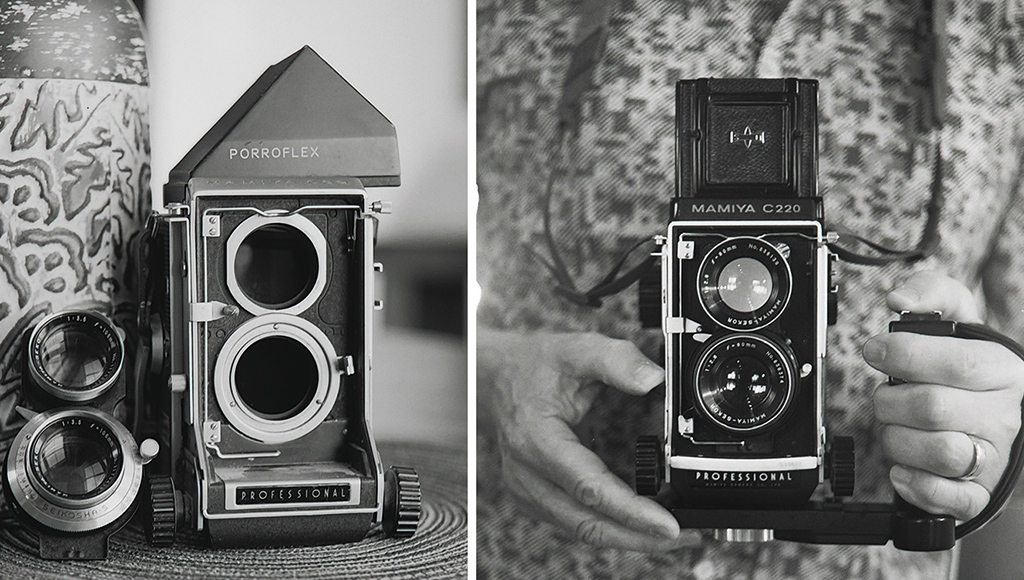
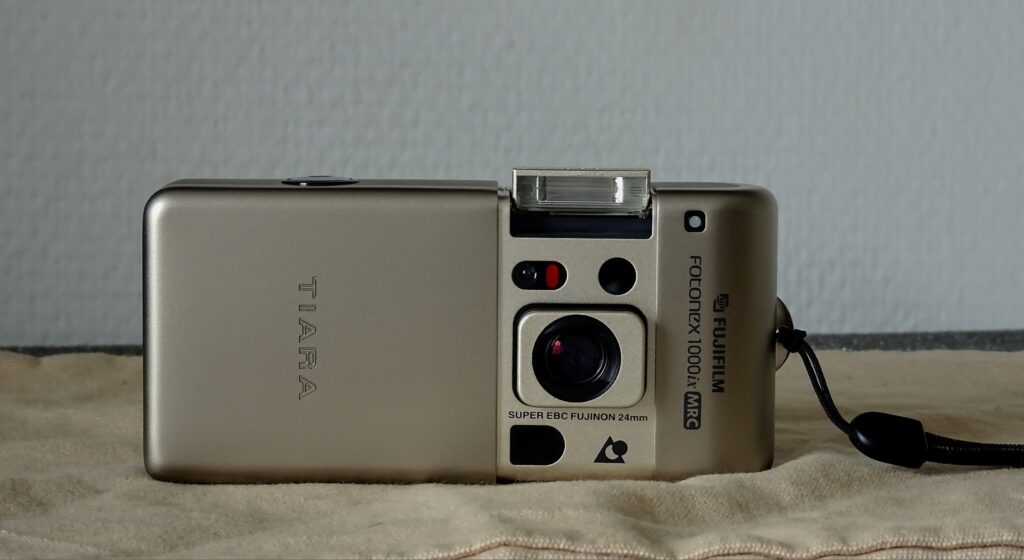

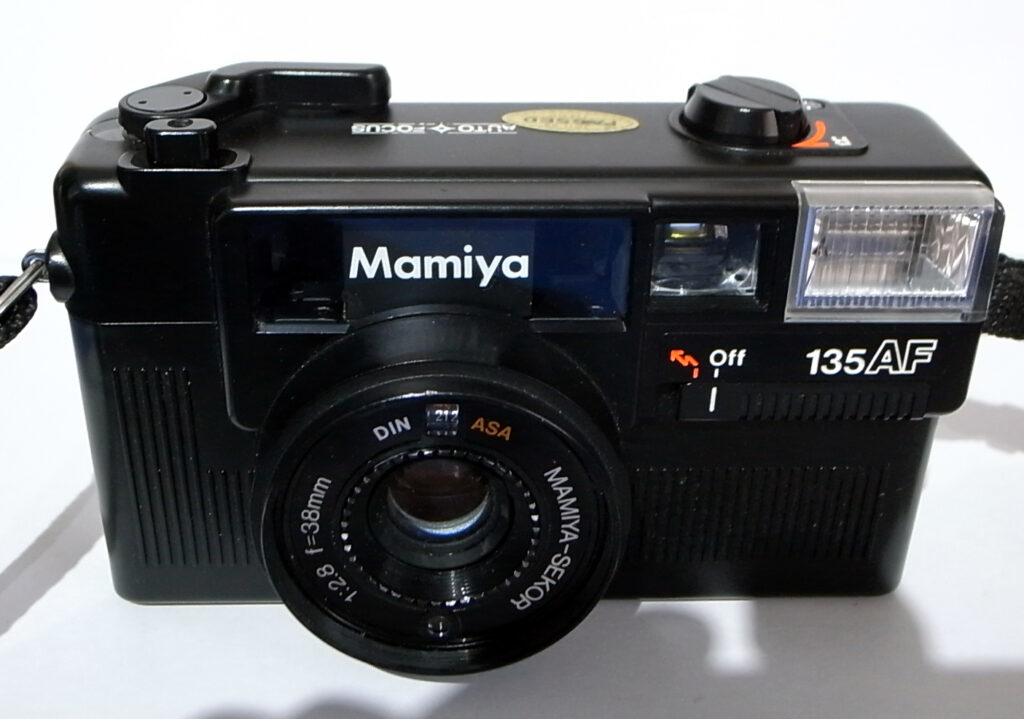




Comments
Gary Smith on 5 Frames with an IR Converted Nikon D300
Comment posted: 03/10/2024
Comment posted: 03/10/2024
Marcus Gunaratnam on 5 Frames with an IR Converted Nikon D300
Comment posted: 04/10/2024
close ups are a challenge due to the fact that the veiwing lens is not the same as the 'taking' lens.This is true for cloe ups and to circumvent this there was a 'para adjuster' arrangement very similar to a scissorlift.Those without this gadget are able to use a scissrlift arrangement sold by one of the mail order companies,by measuring the differenece between the centres of both taking and veiwing lenses and raising the platform by the same amount.
I used to shoot FP4 processed in diluted Neofin (Blue)in a Paterson tank.Agitated by inversion.
Jeffery Luhn on 5 Frames with an IR Converted Nikon D300
Comment posted: 04/10/2024
Gary mentioned Kolari for IR conversions. I agree. They also have a big selection of altered camera bodies on hand. I bought a Nikon D7000 from them, used for several years, and sold it for what I paid. I now shoot 120 format Rollei IR.
My biggest challenge is getting clouds in sunny California. Of course composition is everything, and from what I see, most people have more to shoot than I do. Trees, trees, cattle, vines, and trees. That's it up here. Sorry, I'm whining.
Comment posted: 04/10/2024
Marcus Gunratnam on 5 Frames with an IR Converted Nikon D300
Comment posted: 04/10/2024